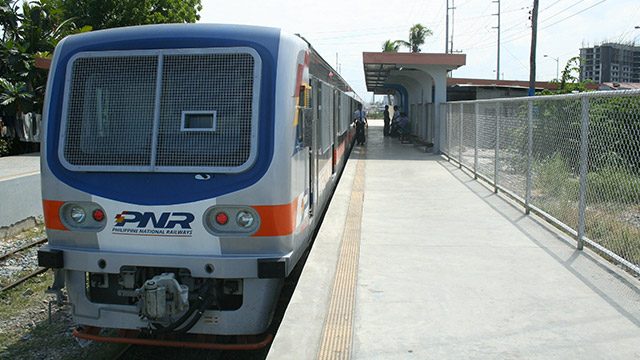SUMMARY
This is AI generated summarization, which may have errors. For context, always refer to the full article.

MANILA, Philippines – What about the Philippine National Railways (PNR)?
Following the brouhaha over the needed repair for the Metro Railway Transit (MRT) and the #MRTChallenge it had sparked, Senator Ralph Recto asked government officials to also turn their attention the PNR, which has been encountering glitches as well.
The senator described the state-owned railway transit as “an aging workhorse which still ferries 20 million passengers yearly.” It operates commuter lines across Luzon.
“Kahit konting pagtingin sana mabigyan ang PNR (I hope PNR also receives the attention it needs),” Recto said, citing the wide disparity in the proposed budgetary support between the two train services, MRT and PNR.
Based on the proposed 2015 budget, the MRT stands to get 12 times what PNR will have.
Recto said the MRT is slated to receive at least P6.7 billion ($153 million)* in subsidy, while the proposed funding for PNR is pegged at P546 million ($12.5 million). Around P54 billion ($ 1.23 billion) is also being floated around for the repair of MRT’s problems.
“In contrast, nobody it seems is officially lobbying for more funds for the PNR. One gets the feeling that while one is on its way to modernization, the other is bound for the scrap yard,” Recto lamented.
An alternative to MRT
According to Recto, ignoring PNR is “to forfeit on its potentials.”
The senator explained that just doubling the number of its trains plying the 44-kilometer route from Tutuban, Manila, to Santa. Rosa, Laguna, could raise its daily ridership to 140,000.
The PNR operates the railway transit from Tutuban to Santa Rosa, and from Naga City to Sipocot, both in Camarines Sur.
“This is one-fourth the number of passengers taking the MRT every day. Adding more PNR trips will relieve the pressure on MRT and give many commuters an alternative,” Recto said.
However, the proposed 2015 budget for PNR won’t suffice for the needed rehabilitation expenses of the railway transit. In order to put 3 trains, with 3-4 coaches and an engine each, the PNR would require a total of P600 million ($13.75 million).
“If this is indeed the cost, then I would urge the government to include it in the 2015 national budget,” he said. “It should also study the option of buying new ones.”
According the the PNR management, rehabilitating existing PNR trains is more affordable than building a road or purchasing new buses. The Department of Public Ways and Highways added that P600 million can only build around 30 kilometers of a one-lane highway.
Doubling PNR’s rolling stock will displace 14,000 cars on the road at a per passenger cost. That is one-eighth of the subsidy government pays for one MRT rider, Recto pointed out.
Government subsidizes PNR passengers at P5 each, and MRT riders at P40 each.
At present, PNR’s Tutuban-Santa Rosa service – a fraction of its once extensive 1,110-kilometer network – operates from 5 am to 7 pm daily with 23 stops in between. – Raisa Serafica/Rappler.com
P43.61 = $1
Add a comment
How does this make you feel?
There are no comments yet. Add your comment to start the conversation.